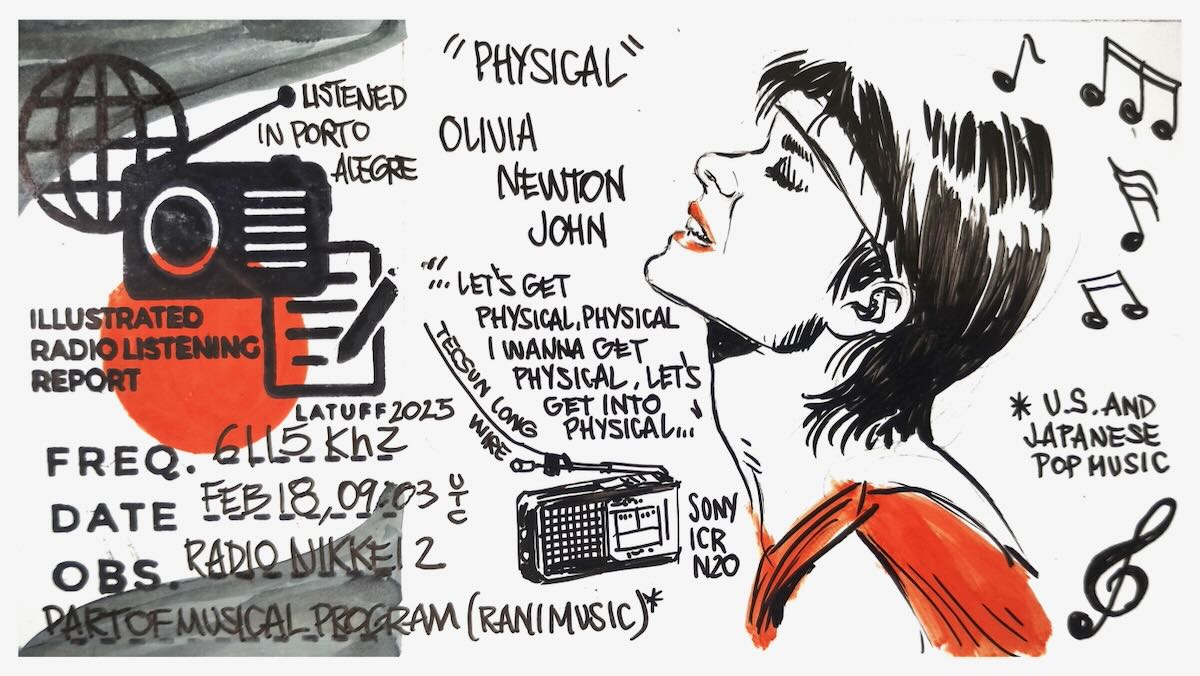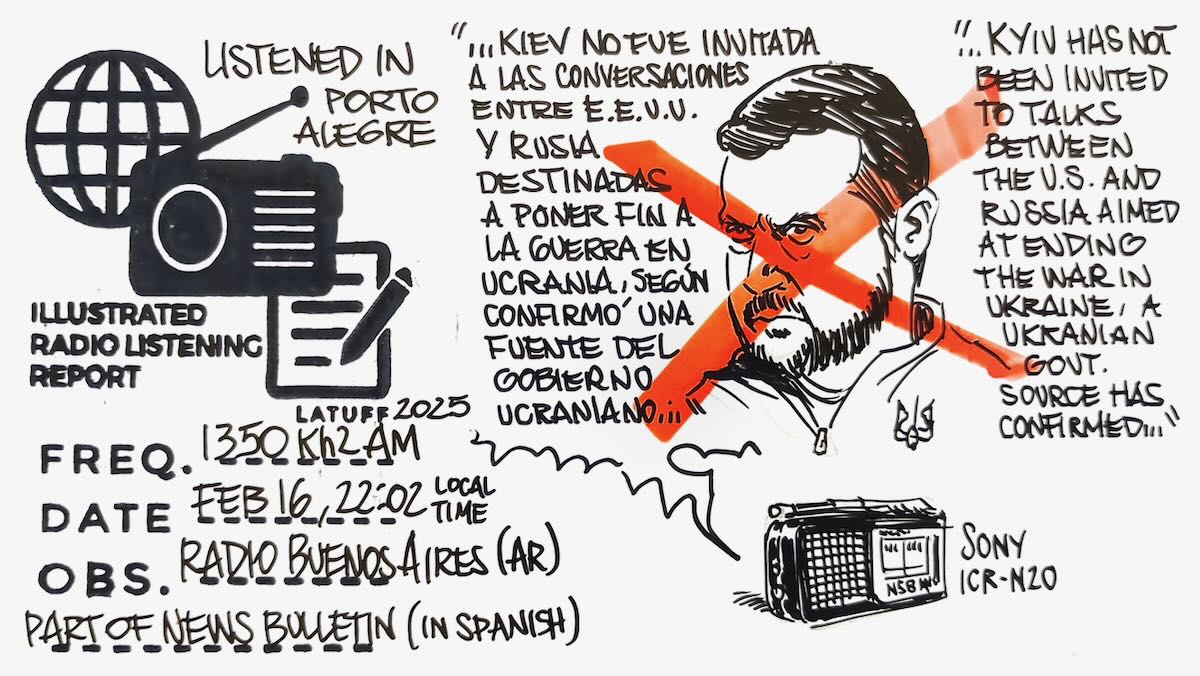Visiting the studios of the University Radio of Rio Grande do Sul, Porto Alegre, Brazil
by Carlos Latuff
On the morning of Thursday, February 27, 2025, I visited the studios of the radio station of the Federal University of Rio Grande do Sul (UFRGS in Portuguese) in Porto Alegre, Brazil. Founded in 1950, it’s the first broadcaster in Brazil operated by a university, which currently broadcasts on medium wave (AM) and over the Internet (streaming): https://www.ufrgs.br/radio/ao-vivo/
The programming focuses mainly on classical music, but it also has programs of other musical styles. Despite the technical, bureaucratic and financial difficulties (a typical scenario of state radio stations in Brazil), the UFRGS Radio has been operating thanks to the efforts of its team. One of the things that catches my attention at this station is the news bulletin, broadcast on weekdays at 12:00 p.m. local time, presented by Mrs. Claudia Rocca.
The bulletin is 10 minutes long and brings local, national and international news, some of which are suitable for my already traditional illustrated radio listening.
According to the station’s director, Mr. Claudio Roberto Dornelles Remião, the UFRGS radio station, like most AM radio stations in Brazil, will migrate to FM, but there’s still no set deadline.










